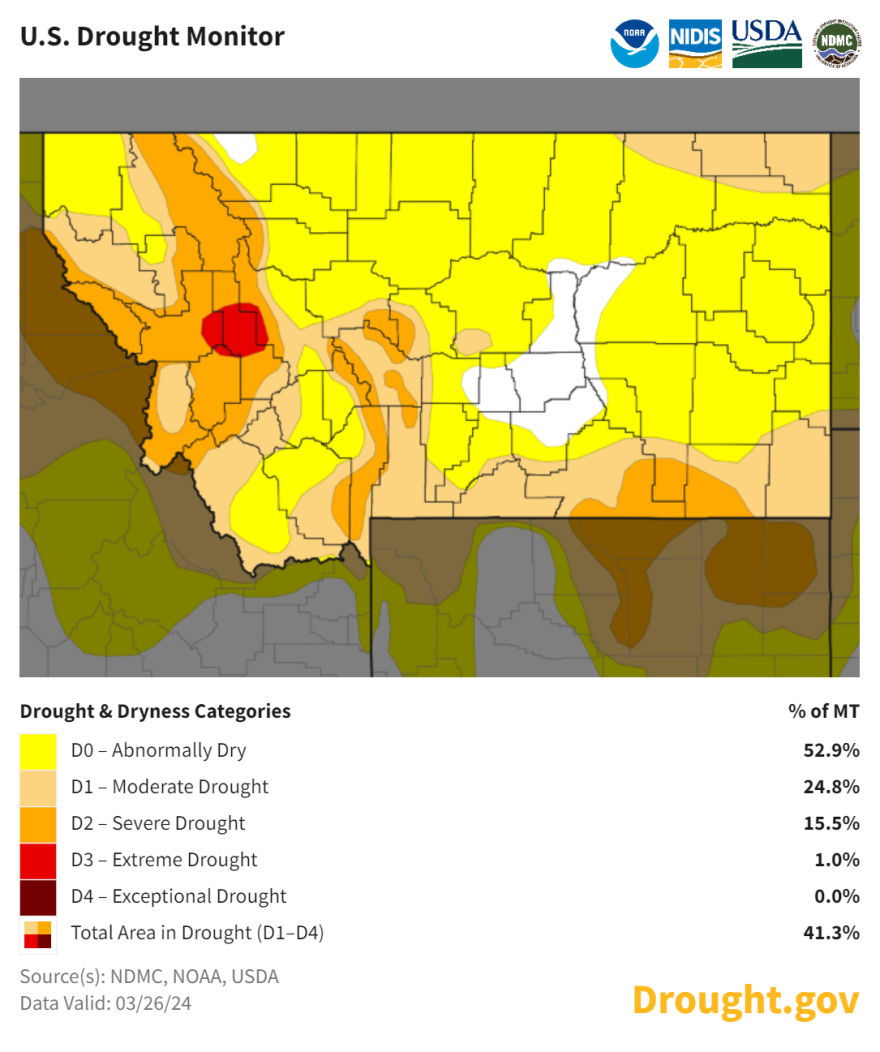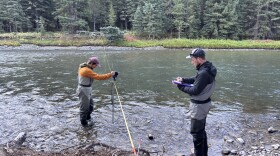Montana will need an extremely wet spring to avoid widespread drought once summer arrives. Scientists are skeptical that the needed moisture will arrive.
Almost 95% percent of Montana is abnormally dry this winter, according to data published Thursday by the National Drought Information System.
Nowhere is the problem more acute than the Upper Clark Fork Basin east of Missoula, where snowpack and precipitation are near their lowest levels since records began in 1979.
And the situation is unlikely to improve before summer, according to forecasts from scientists with the Montana Climate Office. The office recently shared projections suggesting many parts of the state won’t recover adequate moisture.
The scientists warn that could lead to water shortages affecting agriculture, fisheries, and recreation around the state.
-
A handful of federally funded "circuit riders" help Montana’s small towns keep their drinking water safe. Funding for the federal program that supports them lapsed during the government shutdown.
-
With winter approaching, a creek restoration project is wrapping up in the Bitterroot Mountains. Crossing the finish line was hard won. The project faced mounting challenges from federal funding cuts and layoffs. Uncertainty over federal support adds more hurdles for future improvements.
-
BLM continues oil and gas approvals despite federal shutdown; Environmental groups are petitioning the state to stop issuing pollution discharge permits until new standards can be set; The Montana State Prison has the green light to resume water use in all areas of the facility after a water line broke in October.
-
Drought experts say unpredictable precipitation patterns are making drought forecasts more difficult.
-
In 2023, the DEQ listed sections of the Gallatin River as impaired due to recurring algal blooms. The blooms choke out fish and degrade water quality. State scientists are amid a six-year study trying to understand what's causing the harmful blooms. The state says it will use the results to inform local development regulations and a plan to protect the river.
-
The U.S. Environmental Protection Agency has approved changes to how Montana determines water quality. A major water leak at the state prison in Deer Lodge has led to significant disruptions at the facility.








